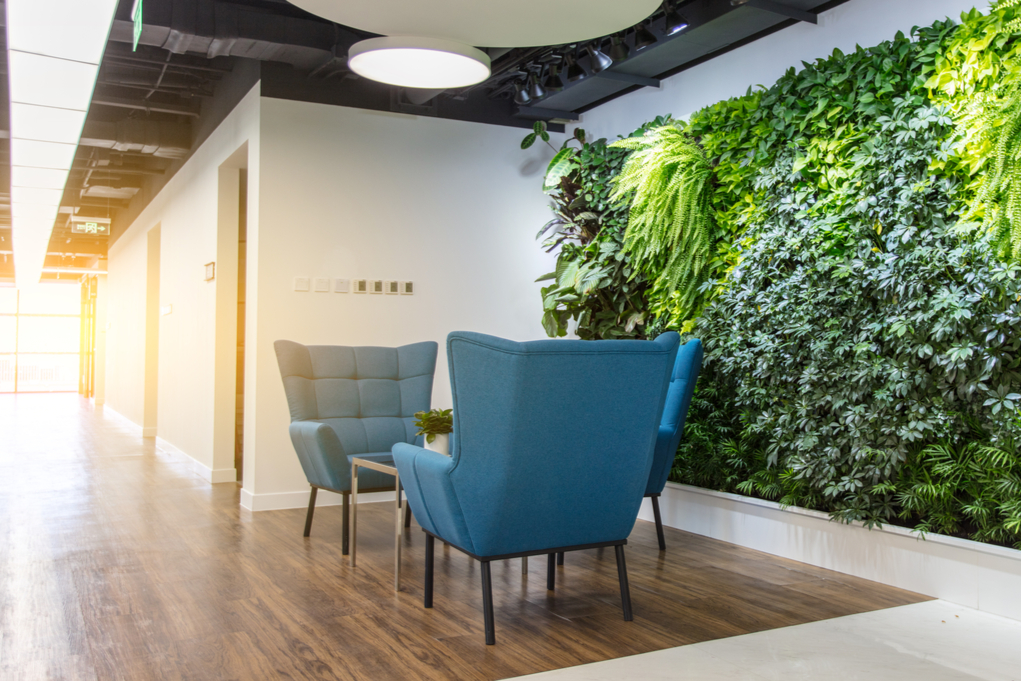Incorporating plants and greenery into office spaces is becoming a popular trend—and not just for the appealing aesthetic. More businesses are testing out a modern biophilic office design due to benefits on employee productivity and mental health. Biophilic interior design has benefits going beyond improved productivity and focus, even impacting how buildings are run.
What is Biophilic Design?
A statistic from the 2001 National Human Activity Pattern Survey shows that working people spend about 90% of their time indoors. With so much time spent inside, a modern biophilic office design brings nature into the workplace along with all of the benefits. This design creates a natural, sustainable environment within the workplace where employees feel energized surrounded by lush greenery and natural materials.
Biophilic Interior Design Trends to Watch
With offices reopening their doors after the initial 2020 quarantine, businesses are adjusting to better meet the needs of their workers. Below are a few reasons why biophilic interior design is becoming a top trend in the post-COVID workplace.
Low-Maintenance Plants
A landmark 2019 study indicated those who interacted daily with plants and greenery are about 55% less likely to struggle with mental health. Those who were exposed to natural elements found themselves in a more productive state. With this being said, incorporating small, low-maintenance plants, succulents, and flowers throughout the office can support the mental and emotional well-being of workers. Creating watering schedules so the office staff can be involved is a good way to include everyone in maintaining healthy plant growth.
Designing for Nature
Physically incorporating natural elements into a building’s design is one way to reap the long-term benefits of biophilic design. One way this is often done is by creating skylights and large, floor-to-ceiling windows. More natural light in an office not only reduces electricity bills, but also improves workers’ productivity and mood. Another way to support modern biophilic office design is by focusing on the outside of the office building. Covering the building wall with natural greenery is a way to filter out pollution, diminish outside noise, and absorb carbon dioxide.
Natural Materials
Modern biophilic office design goes beyond adding plants into the interior—and exterior—of an office building. Another element of biophilic interior design is the use of raw, natural materials throughout the workspace. This can be done by incorporating wood, metal, and stone fixtures, furniture, and flooring into a space. On top of building materials, other ways to add natural elements to a workspace include incorporating fish tanks, small waterfalls, and indoor ponds. Between raw building materials and natural dynamics, a peaceful and productive work environment can be created.

